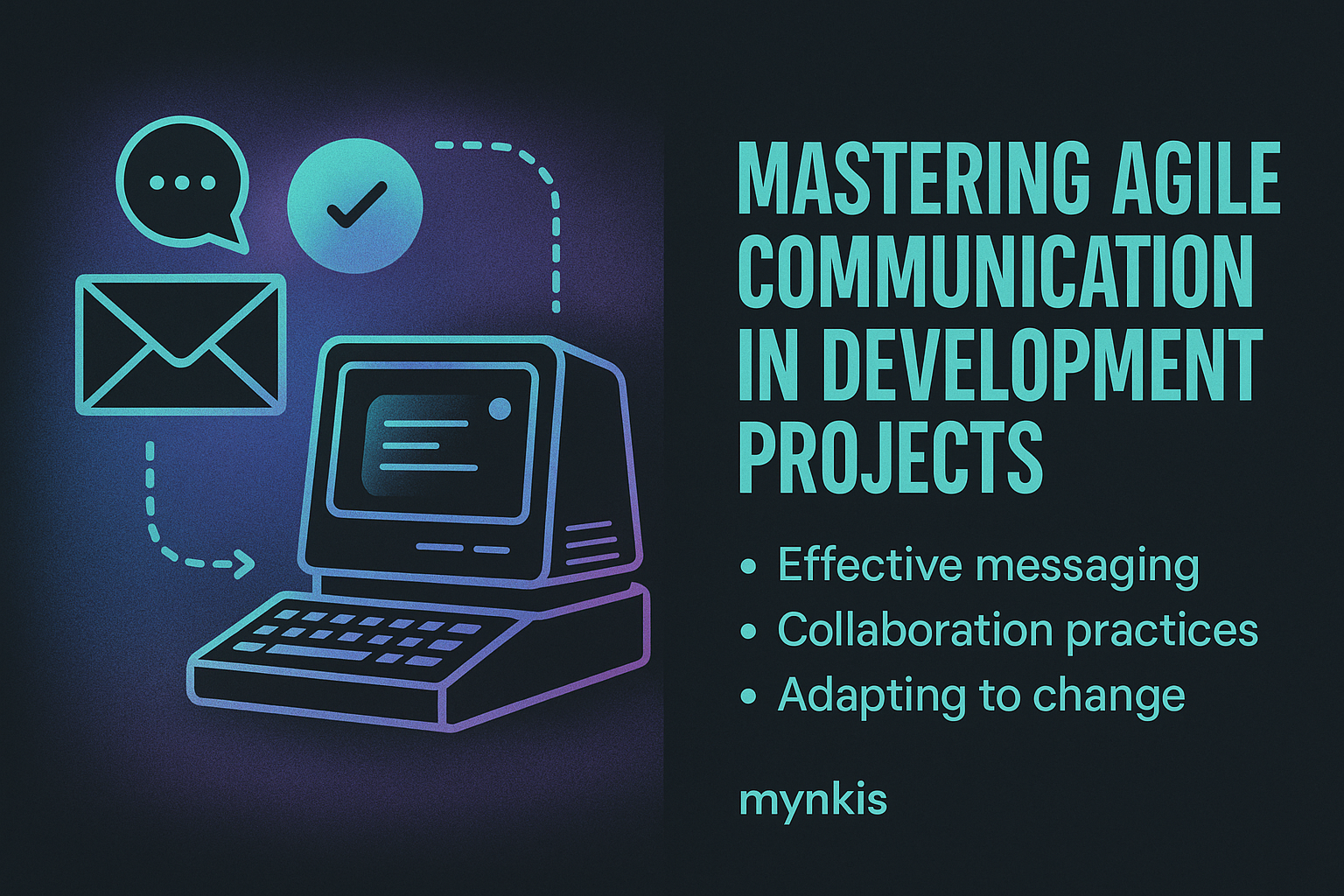Schedule a Demo
Agile communication isn't just a buzzword in the world of custom software development. It's the cornerstone that holds projects together, ensuring everyone from developers to stakeholders are on the same page. Whether you're diving into enterprise web solutions or crafting a small business website, effective communication makes all the difference.
Let's break down what it means to go agile. It's all about flexibility, quick adjustments, and ongoing dialogue. Picture this: your development team is like a surfer, and the project scope is a wave—they're constantly shifting to stay on top. Agile principles advocate for short, iterative development cycles. These sprints keep things moving and give everyone a chance to steer the project in real-time.
In my experience working with operations managers and small business owners alike, I've seen how a few targeted strategies can vastly improve agile communication. First up, regular stand-ups. These daily check-ins don’t have to be long; 15 minutes can keep everyone updated on what's been done, what's next, and any roadblocks. Next, consider having a dedicated communication channel like Slack or Microsoft Teams. It keeps the flow of information seamless and accessible anytime, anywhere.
Utilizing collaboration tools can significantly enhance your project's agility. Tools like Asana or Trello offer real-time updates and transparent visibility into project stages. Not only does this keep the team in sync, but it also allows clients to peek at the progress whenever they want. This transparency fosters trust and keeps everyone aligned towards common goals.
Clear and concise messaging is the lifeblood of agile communication. Have you ever tried explaining a project update over email and realized it turned into a novel? Yeah, me too. To combat this, stick to the essentials. Use bullet points for key information, and always consider your audience. What does your team or client need to know right away? What can wait?
You might think agile development means less paperwork, and you're partially right—but documentation is still critical. Just because you're iterating rapidly doesn't mean your project notes should be scattered chaos. Use lightweight, easily updateable documentation tools like Google Docs or Confluence. Quick reference guides and agile-friendly wikis can be game-changers in ensuring no one feels lost.
Communication isn't always a walk in the park. Time zones, languages, and varying levels of technical understanding can pose barriers. One strategy I've used successfully is setting up universal project terms and glossaries. If everyone is speaking the same language, misunderstandings decrease. For remote teams, consider overlapping hours for essential meetings so everyone can be present and active.
Agile thrives on feedback loops. After each sprint, I like to organize a retrospective to discuss what went well and what could be better next time. This is not just about identifying issues but actively improving communication strategies. Learn, adapt, and apply—what more could you want from a workflow?
Engaging stakeholders is just as important as keeping your development team coordinated. Regular demos or walkthroughs of what's been accomplished allow stakeholders to feel involved and give invaluable feedback before things are set in stone. I've found that this can lead to an easier go-live and a smoother product rollout when dealing with custom software development for various clients.
Different teams have different needs. What works for the marketing team won't always fly with the engineering crew. I customize communication channels and schedules to fit these unique dynamics. Maybe the engineers prefer Slack, whereas the designers love a good old-fashioned whiteboard session. It's about flexibility and finding what works best for everyone.
Active listening is not just a nicety; it's a necessity. I've sat through countless meetings where people were just waiting for their turn to speak. Instead, if you tune in and absorb what others are saying, you'll find your project communications becoming more effective. Remember, agile means responsive, and being responsive starts with really hearing your team and your clients.
Even with the best-laid plans, sometimes things go awry. Your development project encounters a snag or a major hiccup comes up. In these situations, clear, immediate communication is key. Don’t leave your team and clients hanging. Address the issue swiftly, provide status updates, and establish a path forward. From experience, this can mitigate potential fallout and turn a crisis into an opportunity for team cohesion.
I believe that emotional intelligence plays a silent but significant role in effective agile communication. Understanding and managing the emotions of yourself and your team can lead to a more harmonious project environment. Whether it's offering reassurance after a hard sprint or celebrating a milestone, emotional intelligence can propel your team's communication to the next level.
The field of agile communication is constantly evolving. With the rise of AI-driven tools and machine learning to automate communication tasks, we're on the brink of something exciting. While staying human-centered remains essential, adopting these new technologies can streamline processes, giving your team more time to focus on what they do best—building awesome enterprise web solutions that thrill clients.
To sum up, mastering agile communication sets your custom software development project up for success. From daily stand-ups and transparent tools to clear, concise messaging and emotional intelligence, every facet matters. Stay agile, stay communicative, and watch your projects flourish.
